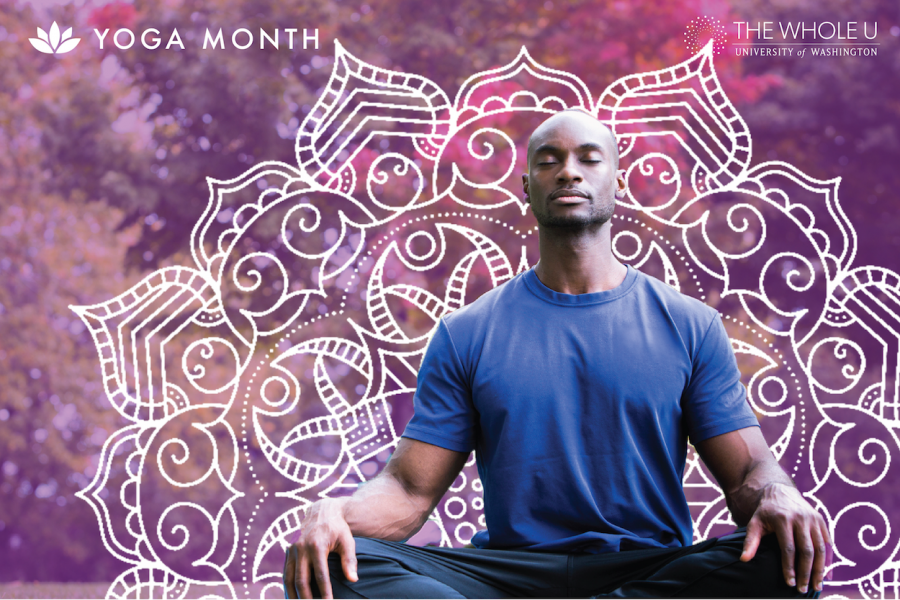
Yoga Month: Chakras Part One
In the past two weeks we have learned that yoga is a practice with many physical and mental health benefits, including reduced low back pain, increased levels of particular neurotransmitters, and greater resilience to stress.
While all the science behind yoga’s benefits is valuable, in general, most people practice because they simply feel better with yoga in their lives. For the next two weeks, we are going to explore the 7 yoga chakras.
What’s a chakra?
The term chakra is derived from the Sanskrit word meaning wheel or circle and refers to seven energy centers, which also have physical correlations in the body. These markers provide us with a roadmap to contemplate our ability to access key life qualities like stability, sensuality, personal power, love, communication, and intuition as well as each quality’s interconnected nature.
While it is of benefit to be in touch with all of these various facets, there are particular times when we might want to focus more on one versus another. For example, if you are moving departments or housing, it could benefit you to explore rituals for stability, foundation, and safety. If you are just out of a relationship and feel like you’ve lost your sense of self, the practices might lean towards personal power. If you feel like your whole life is solely being lead from your head, your exploration might reside in reclaiming your intuition.
It is important to note that although these centers are represented individually, in reality they are tethered to one another and each one supports the other. In addition, while there is benefit to exploring the chakras in a systematic sequential fashion, once you are familiar with their specific qualities it is easier (and encouraged) to focus on the one that is most out of balance here and now.
To recalibrate these areas of our lives, we can utilize small practices that include movements and colors that correlate to, and bolster, each specific energy center.
1) Foundation
The first chakra resides at the base of the spine and is all about physical stability, safety, grounding, and foundation. It is related to primal preservation, our survival instinct, ability to remain centered, an experience of home, and the health of the physical body.
This center reminds us that if our basic needs are not being met (shelter, food, water, emotional safety, body care, etc.) it is much harder to move into other parts of our lives and thrive. This area of stability correlates to the element of earth, is represented by the color red, and relates to navigating fears that show up on our path.
When this wheel is out of balance, one might experience feelings of spaciness, aloofness, anxiousness, panic, an inability to take clear action, and an overall disconnection from the body. Physiologically there might be challenges such as arthritis, osteoporosis, allergies, autoimmunity, and frequent illness due to a low functioning immune system.
To cultivate more root stability, explore these postures:
- Cross-legged seat: if your low back rounds or knees are higher than hip line, sit up on a cushion or folded blanket to create more space in the lumbar spine.
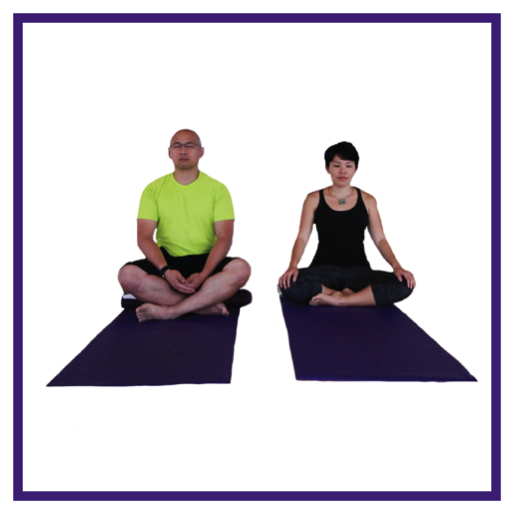
- Mountain: if shoulders feel tight with arms to the sky, take the arms to a wider V or bend your elbows for cactus/goal post arms.
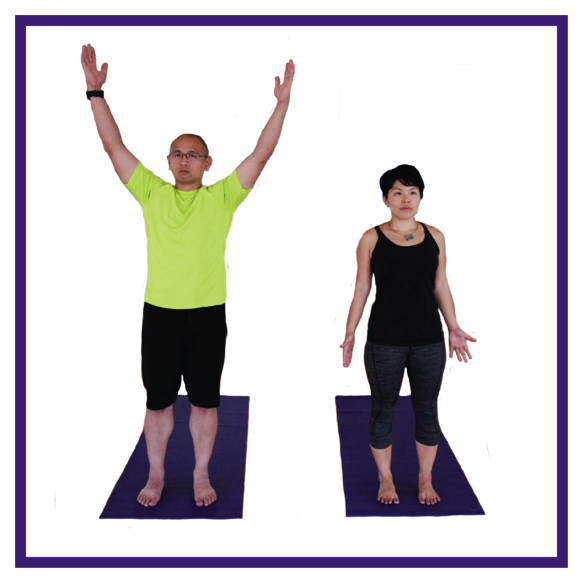
- Down Dog: if hamstrings are tight, it will cause the low back to round, bend your knees generously (for the whole pose) and press your sitting bones towards the sky.
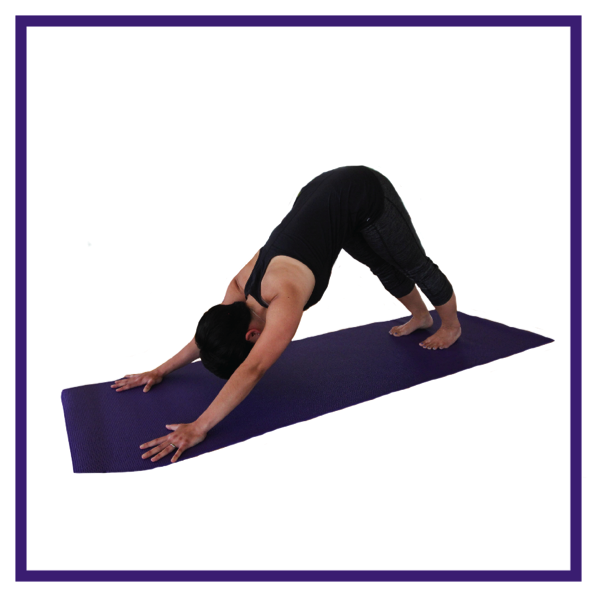
2) Fluidity
The second chakra resides in the sacrum and is all about our emotional experience, sensuality, raw feelings, fluidity, and sexuality. It is related to our ability to go with the flow, stay adaptable, and not take life too seriously all of the time. While physical intimacy is a part of this exploration, it is important to note there are many other areas in life which bring forth pleasure and sensuality.
This center reminds us that if we become overly stagnant, fearful of feeling, numb, or rigid, the nectar of life begins to dry up and we are left with a very repetitive and bland daily experience. This area of fluidity correlates to the element of water, is represented by the color orange, and relates to navigating guilt that shows up in our life.
When this wheel is out of balance there might be an experience of emotional disconnect, fear of vulnerability, rigidity in thought, guilt, or an inability to adapt to change. Physiologically there might be challenges with the bladder, kidneys, reproductive organs, large intestines, constipation, as well as hip, pelvic, and low back pain.
To cultivate more sacral fluidity, explore these postures:
- Cat/cow flexion/extension and circles (focus on the fluid motion of your spinal disks moving back and forth and then shift your attention to the circular rotation of your hips
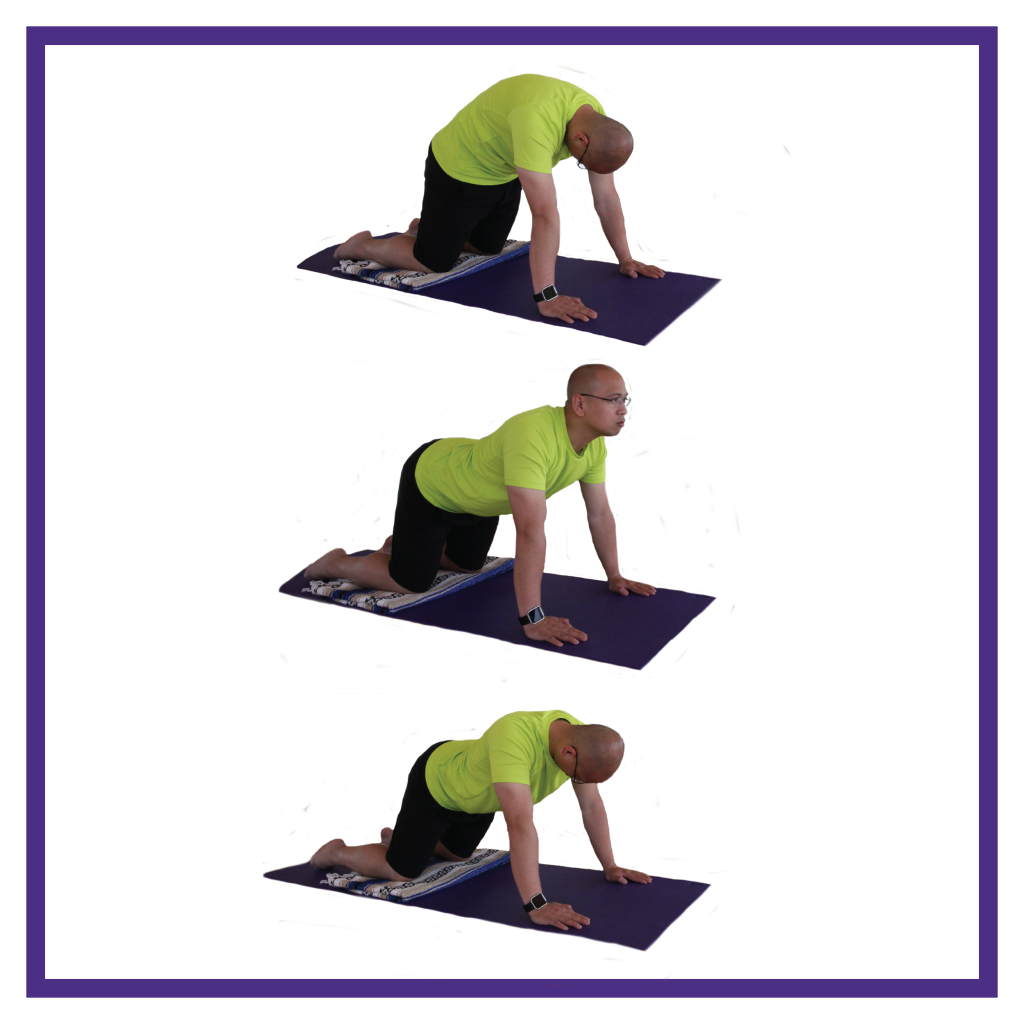
- Half-circle: Once you are set up in your pose, start to move with your breath, circle your top arm 360 degrees as if you were swirling a lasso overhead. Based on range of motion also add gentle circular motions in your hips. At one point reverse the direction on both your arm and hips.
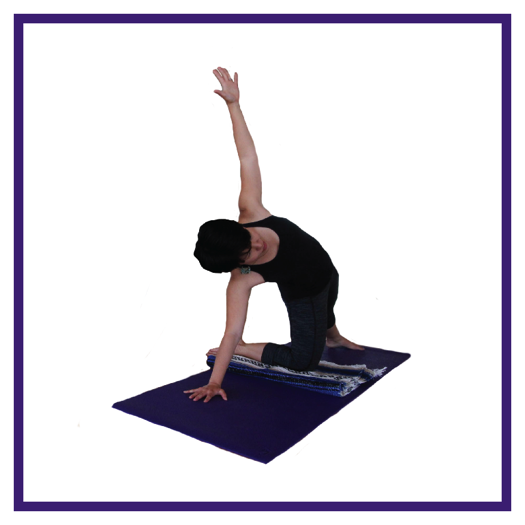
Keep these postures moving with your breath and remember to move at your own speed honoring the specific range of motion available in your unique body.
3) Empowerment
The third chakra resides in the solar plexus and is all about our individual power, self-actualization, vitality, purpose and self-esteem. It involves our ability to take up space, remember that we matter and value what we bring forth and share with the world.
This center reminds us that if we spend too much time in self-blame and negativity towards our unique offerings, we are actually doing a disservice to ourselves and others by not stepping into our power. This area of empowerment correlates to the element of fire, is represented by the color yellow, and relates to navigating past and present experiences of shame.
When this wheel is out of balance there might be an experience of low self-worth, passive aggressive behavior and critical self-condemnation. Physiologically there might be challenges with digestion, muscle weakness and dysfunction in the hypothalamic–pituitary–adrenal axis, which can lead to such issues as adrenal fatigue.
It is important to not confuse empowerment with selfish glorification or a disregard for others. Intelligently, this fiery center lives between the fluidity of water and the qualities of the heart (coming up next), providing a constant reminder that worthiness resides in a delicate relationship between self and things outside of self.
To cultivate more solar fire, explore these postures focus on heat building and core strength:
- Chair: Arms either pause at the horizon in line with the torso or if the shoulders allow float them up higher to your own degree of comfort. If the shoulders become too heated, bring your hands to your hips.
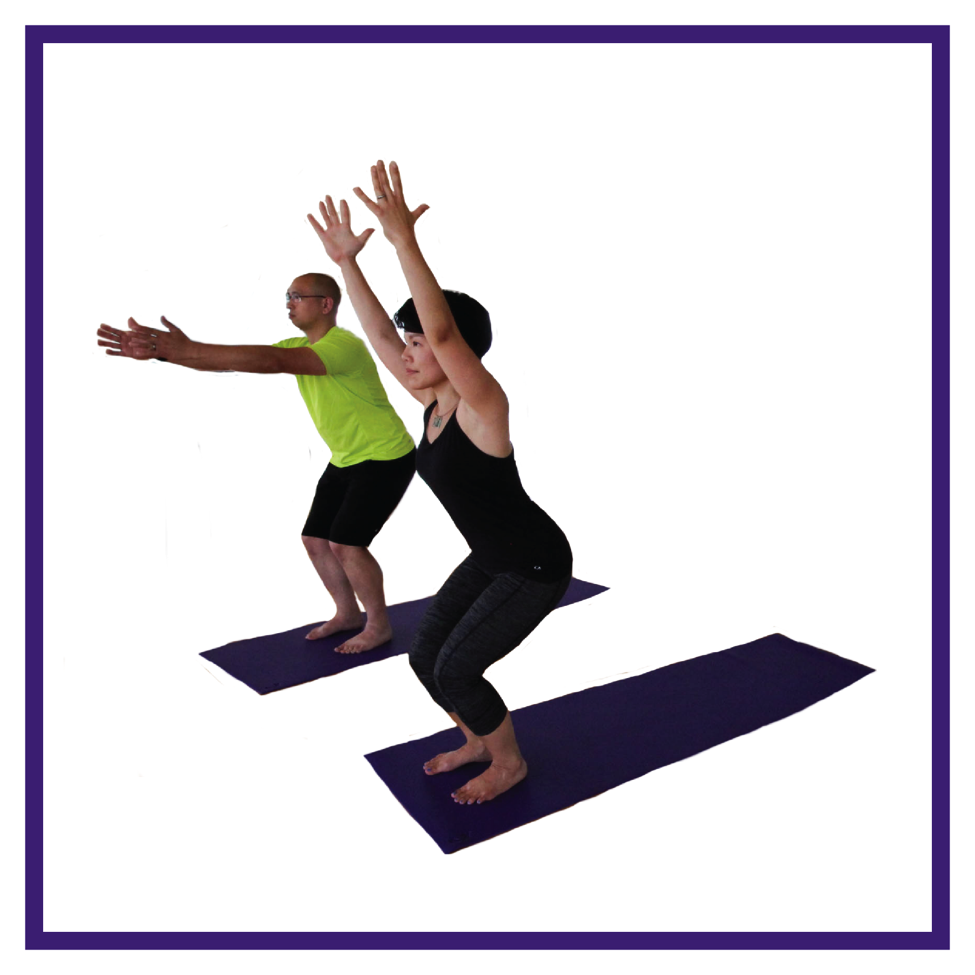
- Warrior Two: The more you sink into your front thigh (at most 90 degrees), the more fire will be created in your body. If your shoulders become too heated, lower your arms down for a moment or two.
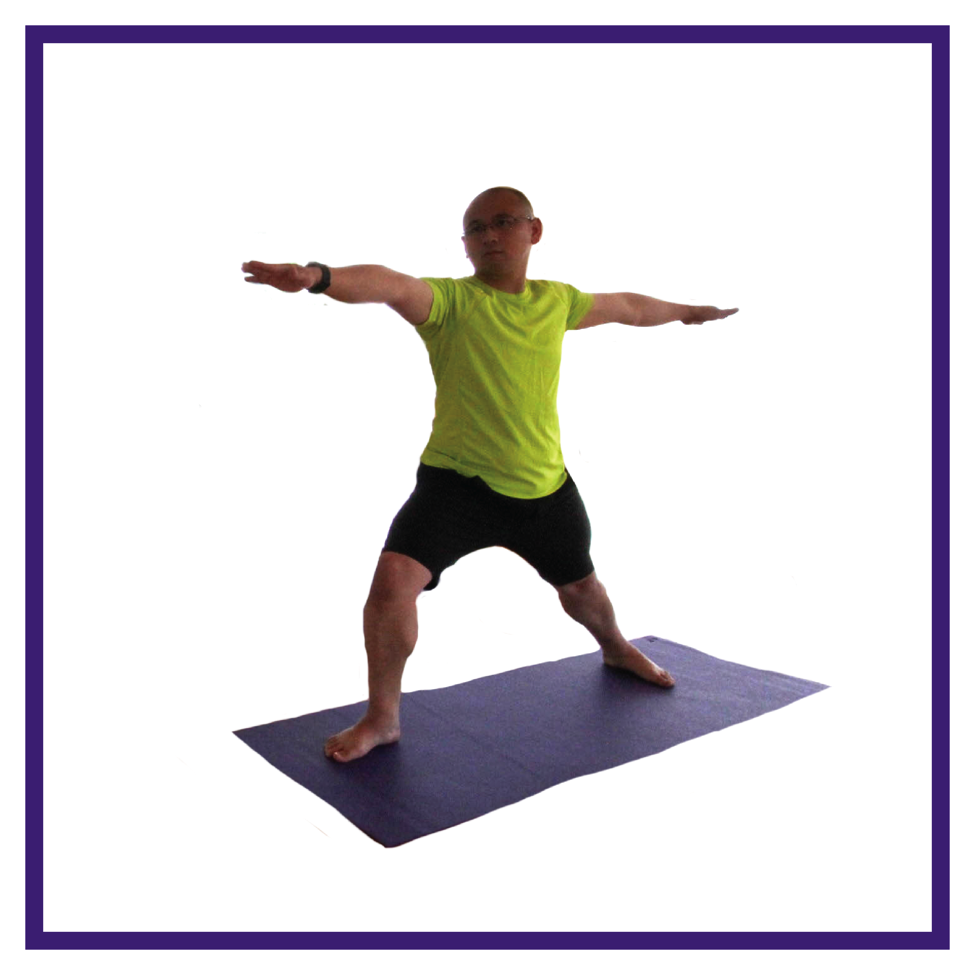
- Forearm plank: Use your breath to slowly lower your knees onto the ground (exhale) and back up to hover (inhale) to create less intensity in the core, but still build ample strength.
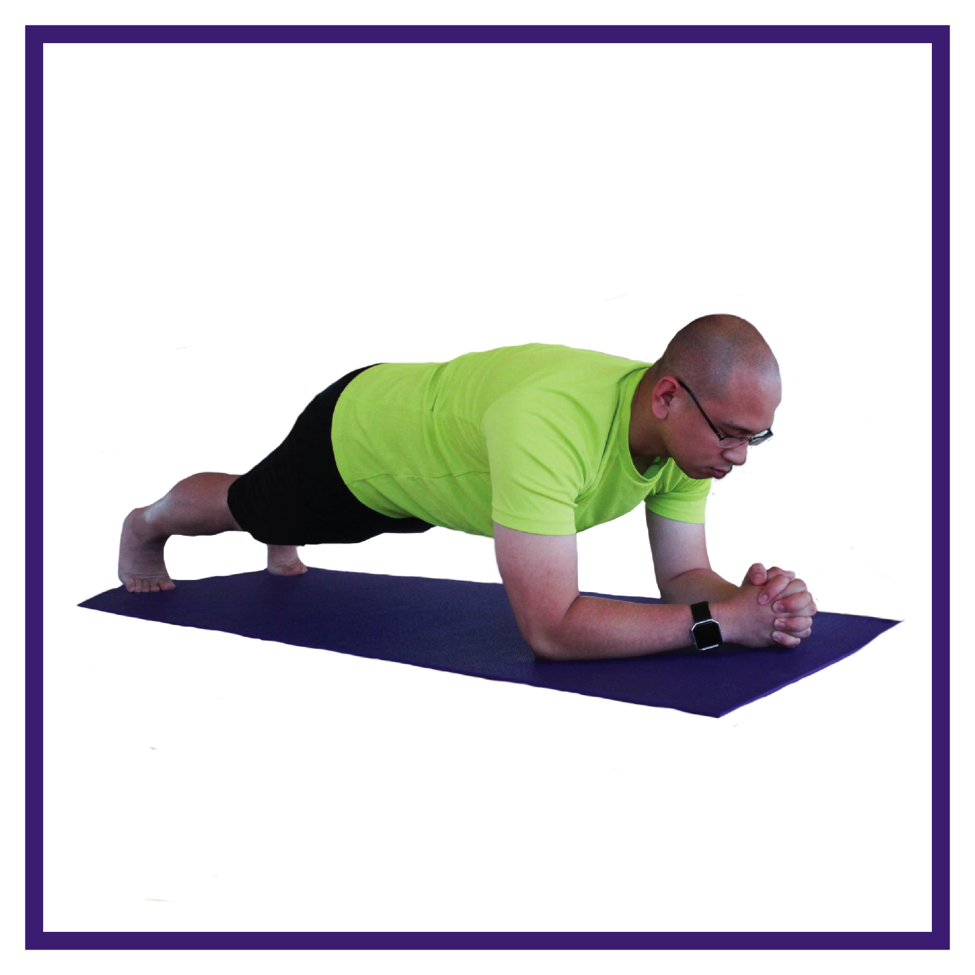
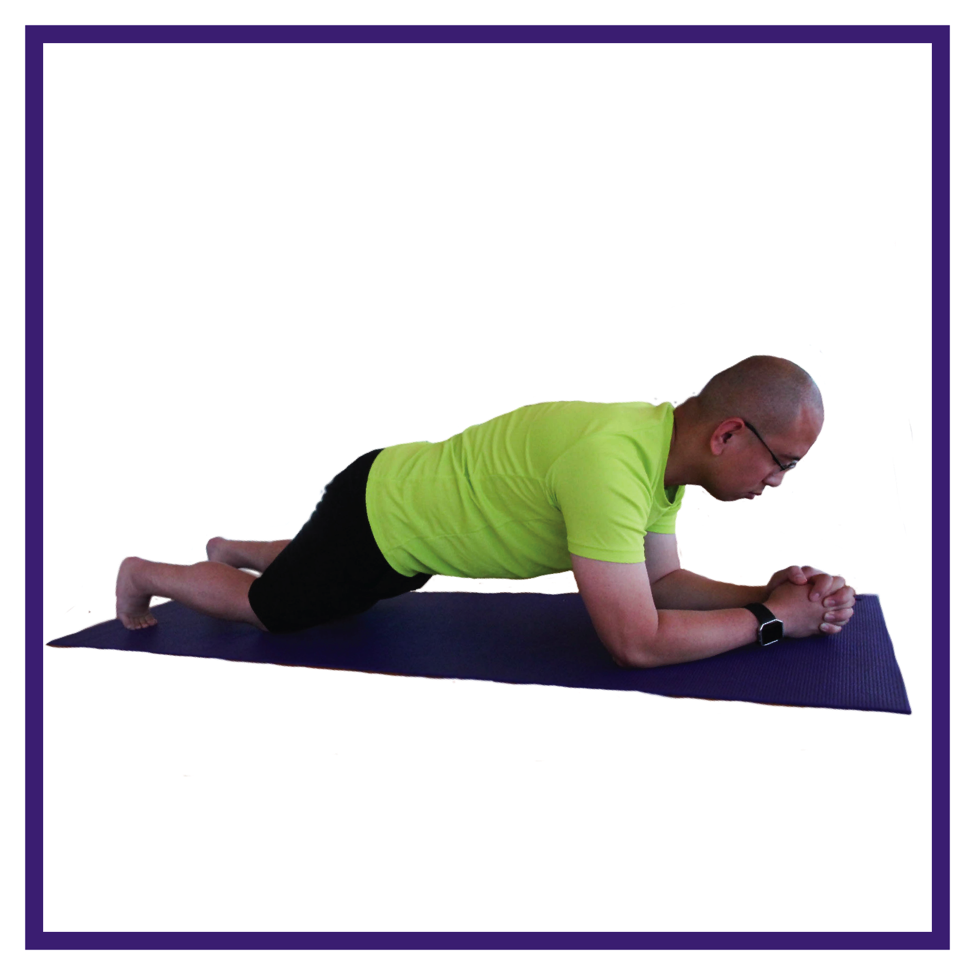
Focus on quad activation in chair, activation of the legs, torso, and arms in warrior two, and core activation in forearm plank.
4) Heart
The fourth chakra resides in the heart center and is all about love, acceptance, self-compassion, forgiveness, and authentic relationships. It involves our ability to stay open, make connections, and balance self-care with care for others.
This center reminds us that if we neglect engaging in self-appreciation and in the cultivation of strong relationships, we miss a vast part of the human journey. This area of the heart correlates to the element of air, is represented by the color green, and relates to navigating personal and collective grief.
When this wheel is out of balance, there might be an experience of isolation, bitterness, or lack of relatedness and empathy. Physiologically there might be challenges with the heart and lungs, pain the upper back and shoulders, and tension in arms and wrists.
To cultivate more openness and heart, explore these postures:
- Cobra: Use your inhale to lift into the pose and exhale to lower down. For more fire, sustain the posture and/or lift your hands to hover off the ground to engage the back more.
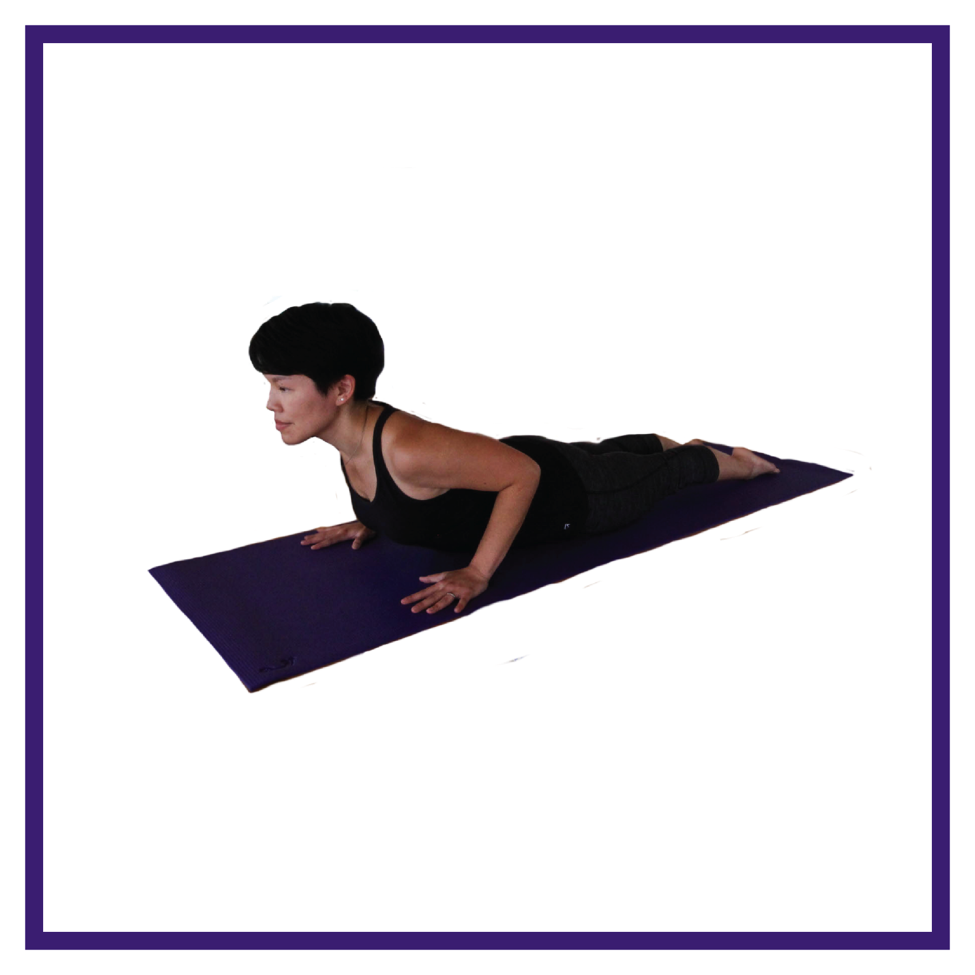
- Bridge: Use your inhale to lift hips and pelvis to the sky and exhale to lower back down. For more sensation, lift up and sustain. Either has your arms in robot arms (elbows bent, hands/fingers point skyward) or scoot your shoulders underneath you, interlace your hands, and stretch your knuckles towards your heels.

- Supported Back Bend (with household props): Ensure the roll is on your shoulder blades, below your underarms. If the low back is tender, keep your knees bent, feet on the ground.
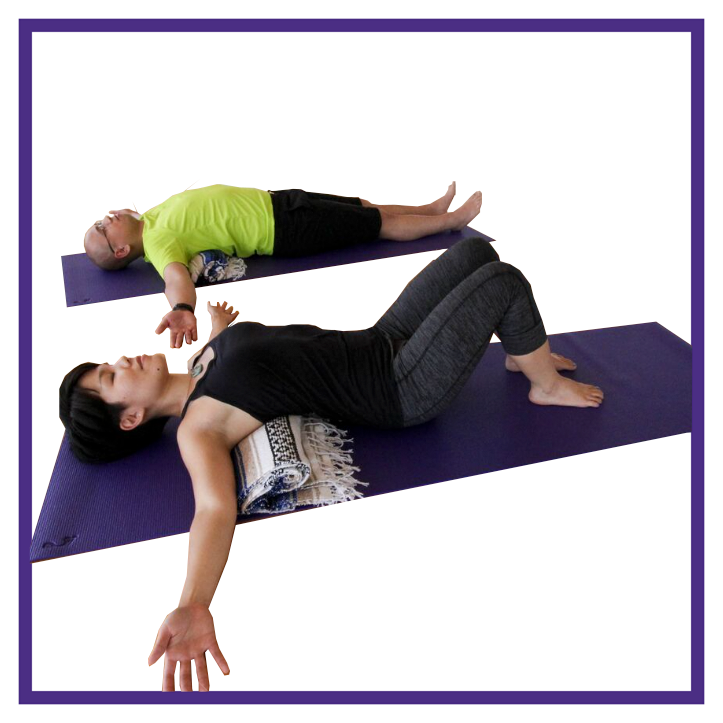
To further your journey, join us for a yoga class at the HUB. You can register here. If you haven’t registered for yoga month, it’s not too late. Register today!
Special thanks to yoga pose models May Lim (Department of Electrical Engineering) and Nate Panelo (Office of Minority Affairs & Diversity).
Namaste.
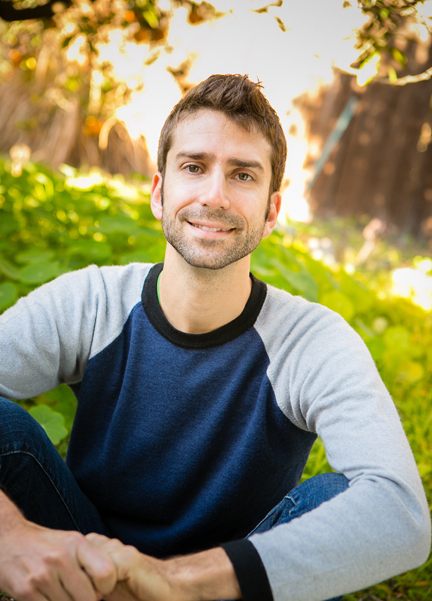 Danny Arguetty, M.A., is the mindfulness program manager at the University of Washington, a yoga teacher (and teacher trainer), nutrition/life coach, and a lover of the environment. He is the author of Nourishing the Teacher and The 6 Qualities of Consciousness.
Danny Arguetty, M.A., is the mindfulness program manager at the University of Washington, a yoga teacher (and teacher trainer), nutrition/life coach, and a lover of the environment. He is the author of Nourishing the Teacher and The 6 Qualities of Consciousness.
Passionate about helping people flourish through mindfulness, wellness, and personal self-development, he has over a decade’s worth of experience in group facilitation, one-on-one coaching, and experiential teaching.
Danny has guided workshops throughout the United States, led basic and advanced yoga trainings in the U.S. and India, and spoken at Facebook, Olson Kundig, and Gravity Payments (all in Seattle). He served as adjunct faculty at Williams College, leads a quarterly course on Intro to Mindfulness at UW, and is a faculty member at Kripalu Center for Yoga & Health.